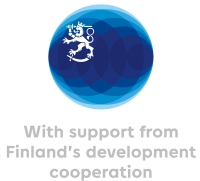The Philippines
The Philippines has a population estimated at 100 million and it’s one of the world disaster-prone countries in the world. The Philippines are threatened by earthquakes, volcanic eruptions, tsunamis, and hurricanes. Various natural disasters afflict the country each year, and many people lose their homes repeatedly, and injuries and deaths aren’t avoided. In the Philippines, many families poverty is inherited from one generation to another.
Social protection programs are available to Filipinos, especially for poor families with low or no incomes, to help them meet their basic needs. But it is a fact that many poor families do not have access to these social protection programs, for example, due to the lack of information. The lack of both income and access to social protection mechanisms contribute greatly in perpetuating poverty among the poor.
We’ve been working in the Philippines since 1981. The most important areas of our work in the Philippines have been, for example, education, nutrition, health, child protection and the prevention of child poverty. Save the Children works in the Philippines also after disaster, for example, when Typhoon Haiyan caused devastation in 2013, we launched a major emergency response and we distributed food, clean water and hygiene supplies.
Save the Children Finland has supported the development of social security in the Philippines since 2015. The current project aims to develop the country’s largest social security program Pantawid program. In the short term social security provides assistance to the poor to alleviate their immediate needs, but in the long-term social security seeks to break the inter-generational cycle of poverty in families benefiting from it. Save the Children aims to reduce poverty, especially among poor children and their families by working together with the local authorities. We are paying attention to gender relations and equality. We also try to identify the poor children and their families in the project areas, and raise awareness among poor families about social protection programs. In addition, we aim to improve young people’s life skills with various training and dissemination of information. We also train the authorities and parents, so that they can take better account of children’s needs and rights.
Children now go to school and receive basic health care

Leonora with her youngest child.
Leonora (47), a housewife and seasonal farmer, lives in the village of Hibulangan, Villaba, Leyte. Her husband’s meagre salary as truck driver and what little she earns from a small rice farm are the family’s main source of income. The family’s house was washed away when typhoon Haiyan hit their town in 2013, and they lost all the belongings they owned.
Save the Children distributed household and hygiene kits to the families who suffer of typhoon Haiyan. According to Leonora these were very helpful because at that time, people in the village were too distressed and busy looking for food such that they often overlooked hygiene. Leonora’s family has been a beneficiary of the government’s conditional cash transfer Pantawid program since 2010. The amount her family receives from the program was sufficient to pay for their school and basic health needs. Before the Pantawid program, parents were not mindful if their children can go to school, nor were they able to submit their children to basic medical check-up; primarily because of poverty. Leonora recently attended a seminar which tackled child development, child rights, child participation and parental decisions. After the seminar, Leonora had been tasked to share what she learned during the training to her fellow parents.
With the 4P’s program, parents are now accompanying their children to personally oversee attendance to classes and medical check-up; these being part of the program requirements to assure that the money is used properly.”
The Philippines’ projects is funded by the Finnish Ministry of Foreign Affairs and Finnish individual donors.
Downloadable materials
- A Qualitative Post-assessment Study on the Impact of a Parenting Programme linked to the Pantawid Pamilyang Pilipino Programme (4Ps) in the Philippines (2018)pdf
- Making social protection deliver more for children in the Philippines (2019)pdf

